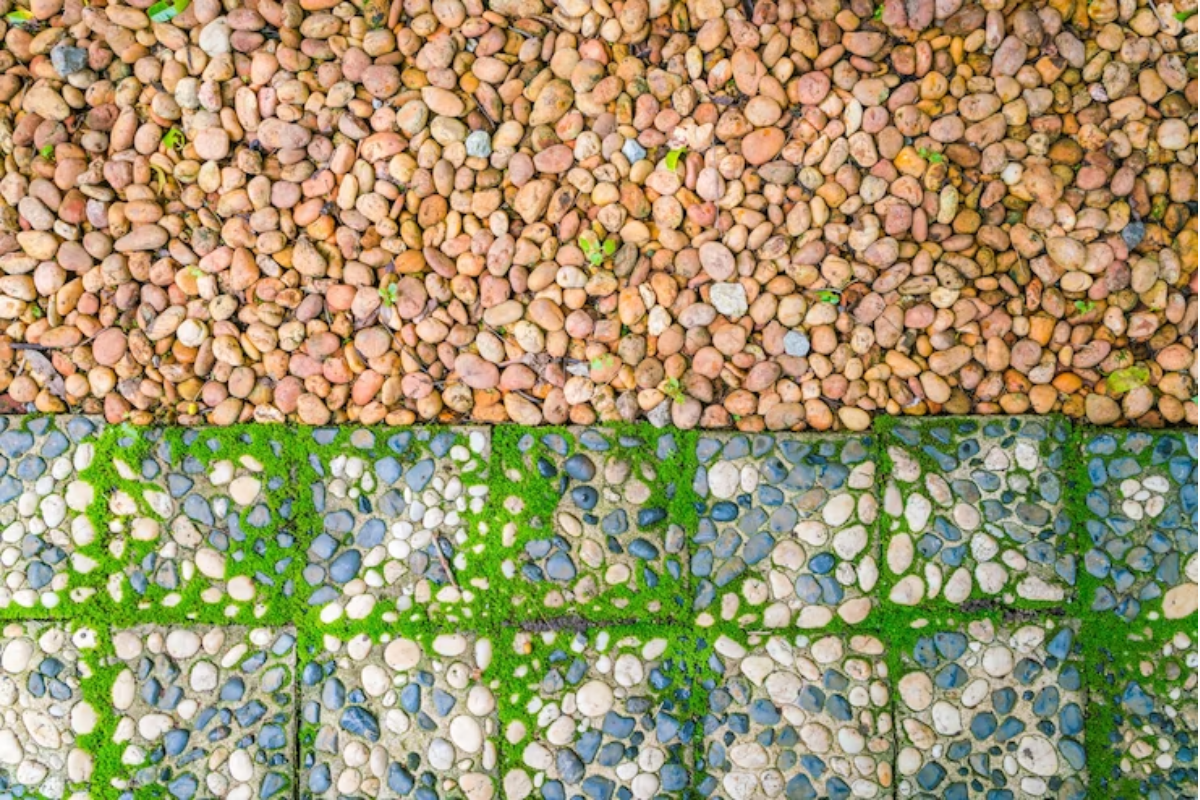Pavers are blocks, tiles, and slabs made from a wide range of materials, such as rubber, clay bricks, concrete, flagstone, marble, travertine, porcelain, and even plastic.
Concrete and a coloring agent are combined to create concrete pavers in a factory by putting the mixture into a mold with a specific shape and letting it cure. Crushed stone and sand layers are placed beneath the pavement surface to build a sturdy base.
Pavers appear more refined than regular concrete slabs, except for certain stamped concrete. They are used to build buildings such as roads, patios, pool decks, and others. The spaces between the pavers are filled with polymeric sand after they have been set up properly.
And here are a few of the most commonly used paving slabs that will make you understand why paving slabs are gaining more popularity than other surface materials.
The different types of paving slabs are as follows:
Indian Sandstone Paving
Because of their range of colors and durability, Indian sandstone paving slabs are among the market’s most widely available types. Because of its endurance and the proximity of the silicon molecules, it is the preferred paving slab by most customers.
India is regarded as one of the top manufacturers of sandstone in the world due to the numerous sandstone quarries dispersed around the country. Indian sandstone is the material of choice for paving projects worldwide, especially in the USA and the UK.
Advantages of Indian Sandstone Paving
- It comes in a variety of hues.
- Simple to clean,
- durable, and very strong.
- Simple to cut
Porcelain Pavers
Clay and other materials are combined to make porcelain, which is then heated to extremely high temperatures in a furnace.
These are primarily used in climates with temperature fluctuations. It is preferred over standard ceramic tiles because it is sturdy and comes in various styles.
Porcelain pavers, however, absorb less water than other porous materials. They can be used both inside and outside. They are usually used on decks around swimming pools and other wet areas.
Porcelain pavers are less expensive than other varieties since they are constructed of natural stones like granite, slate, and marble. It is very easy to clean and requires little care. Porcelain is not advised for driveways in areas with harsh weather, such as snowfall.
Advantages of porcelain pavers
- They last a fairly long time in areas with rather high temperatures.
- They are easy to maintain because of their durability.
- These are quite resistant to wear and tear.
- Visually appealing are their broad diversity and appealing styles.
Limestone or Marble Paving Slabs
Limestone paving slabs are the best on the market because they are aesthetically beautiful, long-lasting, and available in a wide range.
Even though silicon and lime are found in limestone paving slabs, these look a lot like Indian sandstone paving slabs.
Marbles are one of the most expensive and beautiful types of pavers. They come in many different styles and can be used in homes and businesses.
Due to their tumbled texture, marble pavers are less slick, have a beautiful aesthetic, and are perfect for outdoor use. Even on a hot day, marble stays cold to the touch since it is a natural stone.
Advantages of Limestone Paving Slabs
- A paving slab with a soft-appearing gloss and finer surface roughness
- Easy to cut and manipulate
- Resilient and resistant to a variety of weather conditions.
- Creates beautiful textures
- Results in stunning, distinctive, and brilliant colors
Slate paving slabs
Slate is a unique natural stone when compared to sandstone and limestone. While slate is a metamorphic rock with layers, sandstone and limestone are sedimentary rocks made of grains.
The abovementioned variation impacts the application and characteristics of slate stone pavement. When the earth’s crust moves, it puts pressure on the minerals and squeezes them into even layers. This is how slate is made.
Advantages of Slate Paving Slabs
- Unlike limestone, the hue does not fade over time.
- Amazing color tone and texture
- Quite strong
- Due to its low rate of absorption, it resists water damage.
So, here are the four most popular and dependable paving slabs, with features to help you decide which one to use in your home.








